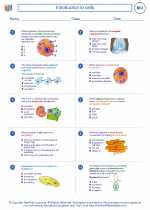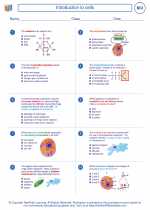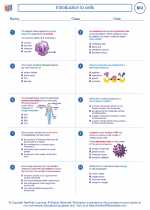Nautiluses
Nautiluses are a group of marine cephalopods belonging to the subclass Nautiloidea. They are often considered "living fossils" as they have remained relatively unchanged for millions of years. Nautiluses are the only living members of the subclass Nautiloidea, which once included many different species. There are six recognized species of nautiluses, all of which are found in the Indo-Pacific region.
Anatomy and Physiology
Nautiluses have a distinctive coiled and chambered shell, known as a "nautilus shell." This shell provides protection and buoyancy for the animal. The animal itself occupies the last and largest chamber of the shell, and it can retract into the shell for protection. Nautiluses have well-developed eyes and a simple nervous system. They also have a pair of specialized tentacles used for capturing prey and a siphon for expelling water from the mantle cavity.
Behavior and Habitat
Nautiluses are deep-sea dwellers, typically found at depths of 200-300 meters, although they can sometimes be found at depths of up to 500 meters. They are nocturnal feeders, preying on small crustaceans, fish, and carrion. Nautiluses are known for their slow growth and long lifespan, with individuals living up to 20 years in the wild.
Reproduction
Nautiluses are unique among cephalopods in that they have an external shell and undergo a process called "external fertilization." Males use a modified arm known as a "spadix" to transfer sperm to the female's mantle cavity. The female then lays eggs, which are fertilized externally by the sperm. The eggs are enclosed in protective capsules and hatch into miniature versions of the adult nautiluses.
Conservation
Nautiluses are facing threats from overfishing and habitat destruction, particularly due to the demand for their shells and meat. Several species of nautiluses are currently listed as "vulnerable" or "near threatened" by the International Union for Conservation of Nature (IUCN). Conservation efforts are underway to protect nautilus populations and their habitats.
Study Guide
- Describe the unique features of a nautilus shell and its function.
- Explain the feeding behavior of nautiluses and their preferred prey.
- Compare the reproductive strategies of nautiluses with other cephalopods.
- Discuss the conservation status of nautiluses and the threats they face in the wild.
- Create a diagram illustrating the anatomy of a nautilus, including its shell, tentacles, and siphon.
[Nautiluses] Related Worksheets and Study Guides:
.◂Biology Worksheets and Study Guides High School. Introduction to cells

 Worksheet/Answer key
Worksheet/Answer key
 Worksheet/Answer key
Worksheet/Answer key
 Vocabulary/Answer key
Vocabulary/Answer key
 Vocabulary/Answer key
Vocabulary/Answer key
 Vocabulary/Answer key
Vocabulary/Answer key
 Vocabulary/Answer key
Vocabulary/Answer key
